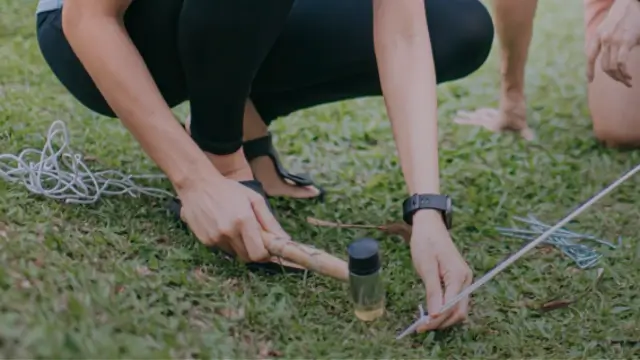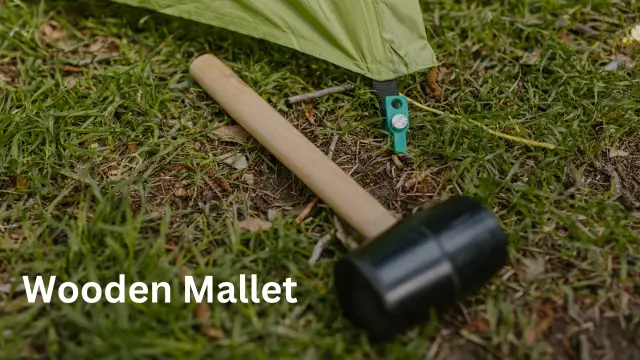Do All Tents Come With Mallets?
Embarking on a camping trip brings the thrill of the outdoors, but one question often lingers: “Do all tents come with mallets?” As a seasoned camper with decades of camping experience, I’m here to shed light on the importance of mallets, the variety among tent brands, and what to do if your tent lacks this essential tool.
Why Mallets Are Important?
Before we dive into the mallet mystery, let’s talk about why the mallet is so important for your camping gear. The mallet helps you set up your tent securely by driving stakes into the ground, keeping your shelter stable in the face of wind and other elements.
Read more: How to Secure a Tent Without Stakes
Do All Tents Come With Mallets?
The answer varies. While many tents include mallets, some don’t. It’s crucial to know what your chosen tent offers. Let’s explore further.
Tents with Integrated Mallets
Certain modern tents have built-in mallets, transforming a basic pole into a versatile tool. This smart design improves setup efficiency, adding extra convenience to the camping experience.
A. The Mallet’s Hidden Secret:
Beyond the obvious role in tent setup, the mallet often holds a hidden secret – it’s a versatile tool for outdoor tasks. From securing tarps to assisting in minor repairs, its uses extend beyond tent-related functions.
B. Streamlined Setup:
Tents with built-in mallets make setting up a breeze. With everything you need close by, you spend less time wrestling with gear and more time relishing the great outdoors.
C. Space-Saving Solution:
Integrated mallets also offer a space-saving solution. Rather than carrying an additional tool, the mallet serves a dual purpose, minimizing the gear you need to pack.
Tent Brands and Mallet Inclusions: A Comparative Overview

Let’s delve into notable tent brands and their mallet inclusions, helping you make an informed decision:
- Coleman: Versatility and Value
- Included Accessories: Tent stakes, guylines, and mallet.
- Why Choose Coleman Tents? They’re versatile and budget-friendly, perfect for all kinds of camping adventures.
- REI Co-op: Quality and Customization
- Included Accessories: Tent stakes, guylines, and customizable options.
- Why Choose REI Co-op Tents? They’re well-made and offer customization options, so you get the features you want.
- MSR: Lightweight and Performance
- Included Accessories: Tent stakes, guylines, and sometimes a mallet.
- Why Choose MSR Tents? They’re light, durable, and perfect for backpackers and adventure enthusiasts.
- Big Agnes: Premium Features
- Included Accessories: Tent stakes, guylines, and sometimes a mallet.
- Why Choose Big Agnes Tents? They often come with top-notch features, and some even have mallets for extra convenience.
- Eureka!: A Mix of Options
- Included Accessories: Tent stakes, guylines, and a mix of options.
- Why Choose Eureka Tents? They have a variety of options to suit different preferences, and some models even come with mallets included.
Comparison Table:
| Brand | Included Accessories | Key Features |
|---|---|---|
| Coleman | Tent stakes, guylines, mallet | Versatility and value |
| REI Co-op | Tent stakes, guylines, customization | Quality construction and customization options |
| MSR | Tent stakes, guylines, sometimes mallet | Lightweight design and high-performance materials |
| Big Agnes | Tent stakes, guylines, sometimes mallet | Premium features and convenience |
| Eureka! | Tent stakes, guylines, mix of options | A mix of options, catering to various preferences |
Decision-Making Tips:
- Consider Your Camping Style: Choose a brand that aligns with your preferred camping style, whether it’s family camping, backpacking, or something in between.
- Prioritize Features: If premium features are essential, Big Agnes might be the right fit. For customization, REI Co-op is a strong contender.
- Check Inclusion Details: Ensure you’re aware of what’s included with each brand. Some may consistently include mallets, while others might vary based on specific models.
- Read User Reviews: User experiences can provide valuable insights. Check reviews to understand how well a brand’s tents and included accessories meet users’ expectations.
Types of Mallets for Tents: Choosing the Right Tool for Your Camping Needs

Selecting the right mallet for your camping adventure is as crucial as choosing the perfect campsite. Different types cater to specific needs, ensuring you’re well-equipped for any terrain or conditions.
- Rubber Mallets:
- Advantages:
- Gentle on Stakes: Rubber mallets provide the necessary force without causing damage to tent stakes.
- Shock Absorption: They absorb shock well, preventing excessive strain on your hands during use.
- Best For: Soft or sandy terrains where stakes might be driven more deeply.
- Advantages:
- Wooden Mallets:
- Advantages:
- Durability: Wooden mallets are known for their sturdy construction, ensuring longevity.
- Versatility: Suitable for various terrains, from grassy fields to hard-packed ground.
- Best For: All-around camping where durability and adaptability are essential.
- Advantages:
- Metal Mallets:
- Advantages:
- Strength: Metal mallets offer increased strength and are effective in driving stakes into hard or rocky surfaces.
- Longevity: Resistant to wear and tear, making them a durable choice for frequent campers.
- Best For: Rocky terrains or locations where stakes need extra force for secure anchoring.
- Advantages:
- Plastic Mallets:
- Advantages:
- Lightweight: Plastic mallets are incredibly lightweight, making them ideal for backpackers concerned about gear weight.
- Cost-Effective: Often more affordable than other types, providing a budget-friendly option.
- Best For: Backpacking trips or situations where minimizing weight is a priority.
- Advantages:
Consider Your Camping Style:
- Car Camping: For car campers with ample space, a durable wooden or metal mallet is ideal for versatility and long-term use.
- Backpacking: If you’re a backpacker, opt for a lightweight option such as a plastic or compact metal mallet to minimize added weight.
- Terrain Factors: Consider the terrain you’ll encounter. Rubber mallets are excellent for softer ground, while metal mallets excel on tougher surfaces.
- Budget Considerations: Plastic mallets are budget-friendly, making them a suitable choice for those prioritizing cost-effectiveness.
What to Do If Your Tent Doesn’t Include a Mallet:
So, you’ve eagerly unboxed your new tent, only to discover it didn’t come with the anticipated mallet. No need to fret; solutions abound. However, it’s essential to approach DIY alternatives with a focus on safety and an awareness of potential risks.
- Check for Hidden Compartments:
- Before diving into alternatives, thoroughly inspect your tent kit. Manufacturers often cleverly hide mallets in compartments or pouches within the packaging.
- Consider DIY Alternatives with Caution:
- If your search within the tent kit proves fruitless, it’s time to get creative. However, it’s crucial to exercise caution when opting for DIY alternatives. Rocks, shoes, and sturdy branches can serve as makeshift mallets, but be mindful of potential hazards.
- Mindful Use of Rocks:
- Using a rock as a mallet can be effective, but ensure it’s smooth and free of sharp edges. Abrupt or forceful swings may lead to injury or damage to your tent equipment.
- Shoe as a Substitute:
- If you decide to use your shoe, be aware that this approach might put strain on your footwear. Use a sturdy shoe, and remember that repetitive impacts could affect its integrity.
- Sturdy Branch Considerations:
- Opting for a sturdy branch requires careful consideration. Ensure it’s free of splinters and firmly anchored to the ground. Exercise caution to prevent accidental injuries.
- Purchase Separately for Long-Term Safety:
- While DIY solutions can be effective, they may not offer the same level of safety and ease as purpose-built mallets. If camping is a regular activity for you, investing in a lightweight and durable mallet is a prudent long-term strategy.
Disclaimer on Safety:
It’s paramount to underscore the importance of safety when resorting to DIY alternatives. These makeshift mallets may pose risks, including personal injury or damage to camping equipment. Exercise caution, be mindful of your surroundings, and use DIY alternatives responsibly.
FAQs:
- Q: Are mallets only for tent setup?
- A: While mallets are crucial for tent setup, they can serve various purposes, from securing tarps to aiding in minor repairs.
- Q: Which type of mallet is best for camping?
- A: The best type of mallet depends on your camping style. Rubber mallets are gentle on stakes, while wooden mallets offer durability.
- Q: Can I use an alternative tool if my tent doesn’t come with a mallet?
- A: Absolutely. Rocks, shoes, or sturdy branches can serve as makeshift mallets in the absence of the real deal.
Conclusion:
In conclusion, the presence of a mallet can significantly impact your camping experience. Whether your tent includes one or not, understanding its importance and exploring alternatives ensures you’re well-prepared for any outdoor adventure.
Have more questions or want to share your camping experiences? Drop your thoughts in the comments below! Let’s build a community of campers helping each other out. Happy camping!
You may also like: